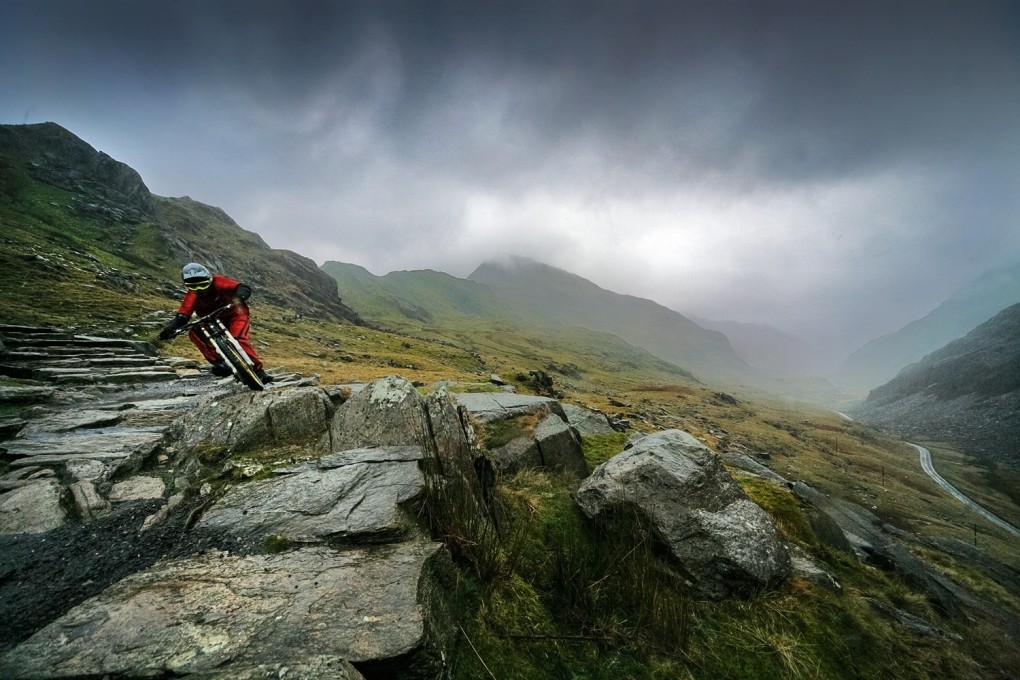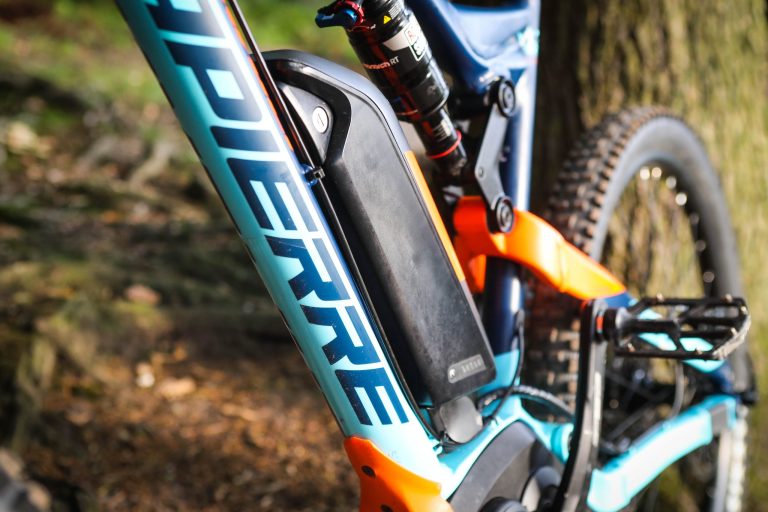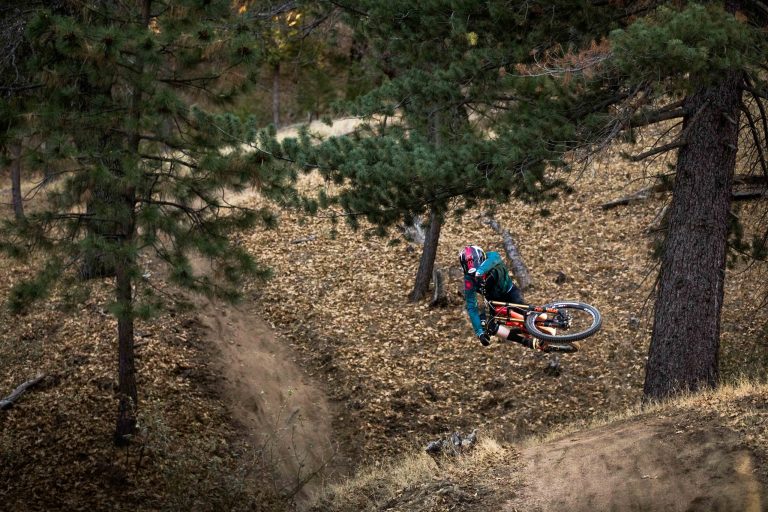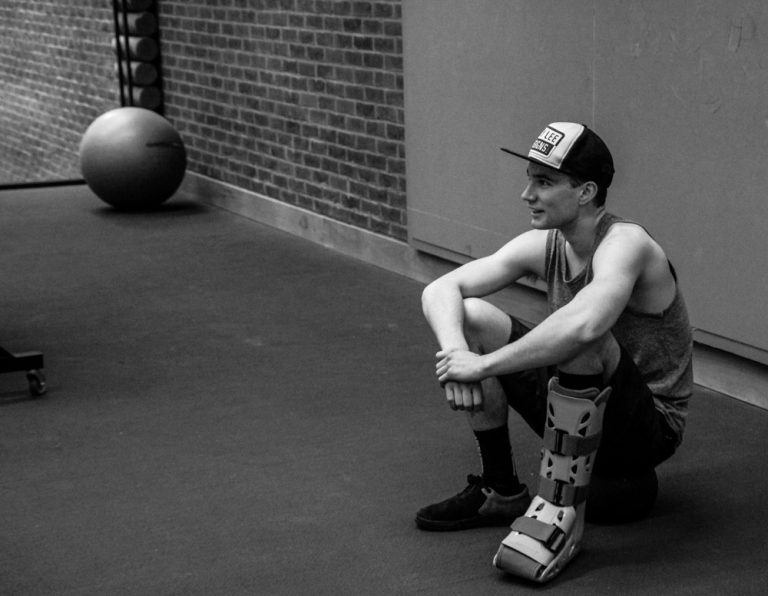
It’s wet. And we’ve been lost on an open mountain in North Wales in dense cloud for about an hour. But now we’re ripping down a road that had turned into a track about fifty years ago. Across the valley a train smokes its way slowly up Yr Wyddfa (Snowdon) with late autumn travellers. Deep underneath us millions of gallons of water are dropping from a high level lake spinning some big–dog GEC turbines, which in turn are powering up the national grid.
DIRT ISSUE 133 – MARCH 2013
Words by Steve Jones. Photos by Steve Jones and Laurence Crossman–Emms
We’re surrounded by galleries, stepped and sawn out of the mountain creating balconies from which slate has been extracted for over a century. At its peak this mountain had three thousand men working the Dinorwic slate mine, the second largest in the land next to nearby Penrhyn. The quarry worked up until 1969 before closing down.
It’s late autumn, the Alps have been shut for a few months now, falling leaves on the Cote d’Azur means that many of the trails have gone into hiding for a while. The nomadic mountainbiker now turns to closer pastures, familiar places, the two hour drive to landscapes which are essentially every bit as challenging as anything mainland Europe can offer.
North Wales is one of the oldest UK mountainbike destinations and is currently at the very forefront of progression, defiantly banging a marker in as one of the most hardcore riding areas in the land.
NATURALObviously you might need to dig a little deeper than what’s published, after all mountainbiking has become backyard, underground even. Hidden in these ancient hills, and amongst some of the most complex geological structures on the planet, the British breed is fine–tuning fine tunes, making breeds within a breed (I’m sure there’s a word for it) fashioning flowing lines of Welsh carve. Handcut track reproduction is rife around here.
It’s not the only way. There’s the money build. Coed Y Brenin was the first in some ways. It was arguably the earliest of the modern day trail centres. It provided an all–weather trail in an all–weather environment. It came just as riders were beginning to exhaust the bridleway network, but slightly before handmade downhill beads started to multiply.
See, North Wales is wet. It’s wild. I’ve been riding here for 25 years off and on, certainly before surfaced trails and coffee shops existed. I remember clearly cutting through the debris near Gladstone rock on the flanks of Snowdon before cooking some sausage and bacon in the boot of my beaten up hatchback. For me north Wales is about the peaty damp mossy smell in winter, unpredictable cloud, difficult route finding, exploring hidden valleys and singletracks. It’s a place for pure adventure, a metamorphic landscape to escape and hide in.
Explore the dereliction of Dinorwic, Penrhyn, Rhosgadfan, Tremorthin, Penmachno quarry workings and buildings, mixed in with some classic old school rock bridleways around Llyn Cowlyd, then there’s the Snowdon Ranger (said by some to be one of the finest descents in the country) or some of the more pure cuts above, below and generally all around Betws Y Coed. These are intimidating and untouchable tests for bike and rider, historic and without the façade that comes with European cash. Yes, and always fully technical.
It’s no longer the past either. In a way we have come full circle. We don’t have to be told where to go, it doesn’t have to be one–way traffic, you can use your gears to go up. Mountainbiking has delivered a new type of rider, one that can mix the skills of motorcycle enduro and trials rider yet whilst doing it under their own steam – kind of freeride gone rambling, but more of that later.
Look at the beauty of where the likes of Dan Atherton, Joe Barnes and Nico Vouilloz are riding. Look at the natural terrain around which he Megavalanche, Italian and French enduro races are held. It requires a freestyle approach, heads–up riding without any rules or hitching a ride back up. We can now get to and race down that gnarled–out goat track.
It’s one way of looking at it.>>






